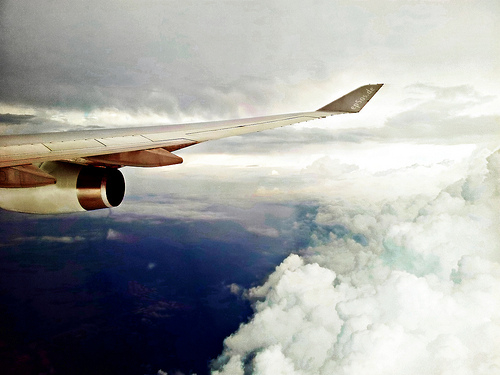
Having a chronic lung disease can have an impact on many aspects of your life. You may not be able to move as quickly or walk up hills. However, with proper planning you should still be able to enjoy vacations and traveling. Here are some important tips.
Traveling with Oxygen for Pulmonary Fibrosis Patients
For patients that require oxygen, it is important to plan ahead. If you are flying to your destination, you should consult with your doctor. Commercial airplanes are pressurized to about 7,500 feet. This means that there is less oxygen in the air than at ground level. Patients who use oxygen will generally have to increase their oxygen flow. Patients who don’t require oxygen may require temporary use of oxygen for longer flights. All airlines have similar policies and procedures for traveling with oxygen. In the past the airlines provided oxygen tanks at a cost. Now, you are required to bring a TSA-approved portable oxygen concentrator. These devices make oxygen. They have batteries that allow for extended use and are then recharged when you land. Different portable oxygen concentrators are able to produce different amounts of oxygen. There is always a trade-off between weight/size of the concentrator and the amount of oxygen the device can produce.
If you already use oxygen, the company that provides your usual oxygen will have portable oxygen concentrators that are available to you. Your insurance will generally cover this. You will need to download from the airline’s website a form that your physician will complete (this includes a written prescription for the portable concentrator). Plan early so that you allow enough time for your pulmonologist’s office staff to help arrange for the portable concentrator from your oxygen company. You may start the process by talking with your oxygen company’s service agent. Be sure to get enough batteries for the duration of the flight and travel to and from the airport. If you have a layover, be sure to find an electricity outlet to charge your batteries.
Patient’s that don’t require oxygen at rest where they live may have a more complicated time obtaining portable oxygen for their trip. You always have the option of renting a portable concentrator. If you have Medicare, the criteria for Medicare to cover the portable concentrator requires that your doctor demonstrate that you have an oxygen saturation of below 88-89%. There is a subset of patients who have preserved oxygen levels at sea level but will require oxygen at cruising altitude. There are a few options.
High Altitude Simulation Test
You can just pay for the portable oxygen concentrator rental. You can undergo a high altitude simulation test (HAST). This test involves breathing in air with a reduced amount of oxygen. If you live near an area that is at higher elevation, you may buy a portable pulse oximeter and take a picture of yourself including your finger with the device showing low oxygen saturation. We have successfully used this to document a need for portable oxygen while traveling.
Some patients are too ill to travel by plane. The more oxygen you require and the longer the flight, the greater the risk. For example, if you normally use 4 liters/minute of continuous flow and you are planning a one-hour flight this poses little risk provided you have a good quality portable oxygen concentrator that can deliver 5 liters per minute pulse flow. The amount of time you will spend at cruising altitude is very short. However, the same patient that is planning a 10-hour flight will have a much harder time and I would advise against it. Work with your pulmonologist to help assess the safety of longer flights.
Traveling through Mountains and High Altitude with IPF
Patients who are too fragile for air travel can still travel by car and train. Many of my patients have traveled across the United States by rail and have had great experiences. If you are driving across a mountain pass, turn up your oxygen flow and avoid rest stops until you are at lower elevation. Always be sure to have extra oxygen in case of delays. A portable concentrator that can run on your car’s battery makes the most sense for longer trips.
Always allow ample time to avoid rushing through airports or train stations. Take advantage of wheel chair assistance through airports. It is common to have distances of greater than half a mile between where you park your car and the airplane gate. Bring a few extra dollars and have a porter assist you. This will ensure that as you start your trip you are not exhausted.
Salt Intake when Traveling
Remember that when you travel you will not have nearly as much control over your diet and salt intake. Eating in restaurants always means that your salt intake will increase dramatically. Talk with your doctor if you are on diuretics and make a plan as to how to deal with the added salt in your diet.
Lastly, choose your destination wisely. If you have advanced lung disease, a mountain vacation in Telluride, Colorado or a walking trip through San Francisco are not good choices. However, a beach vacation or a cruise would be a much better choice.